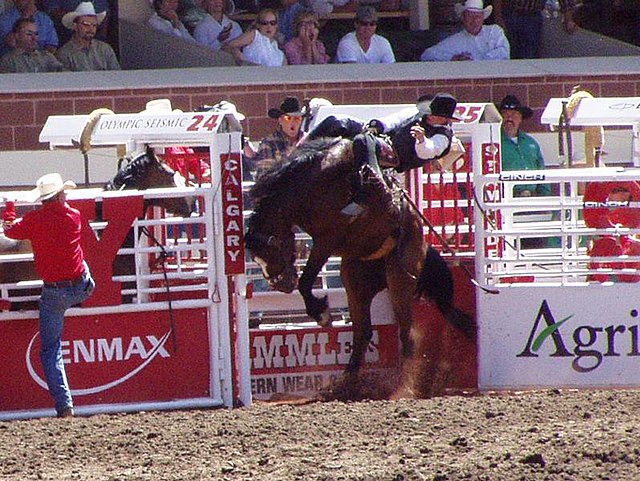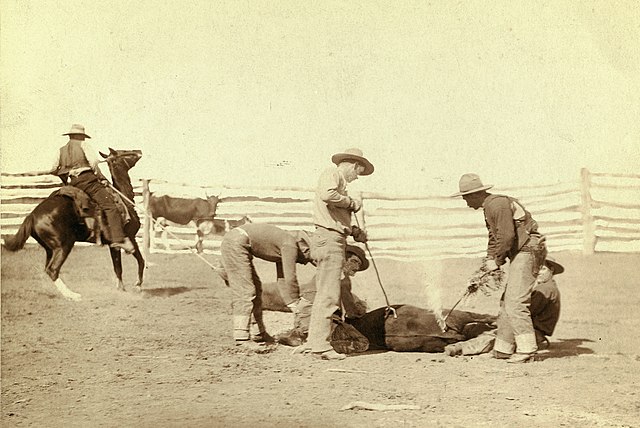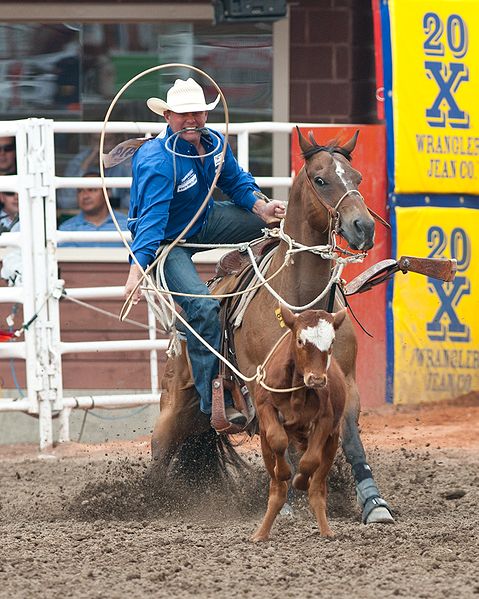Calf roping, also known as tie-down roping, is a rodeo event that features a calf and a rider mounted on a horse. The goal of this timed event is for the rider to catch the calf by throwing a loop of rope from a lariat around its neck, dismount from the horse, run to the calf, and restrain it by tying three legs together, in as short a time as possible. A variant on the sport, with fewer animal welfare controversies, is breakaway roping, where the calf is roped, but not tied.
Calf roping in modern competition
Calf roping as a rodeo event had its origin in ranch work.
Chute 9 at Cheyenne Frontier Days for timed events
Calf Roping event at the Calgary Stampede
Rodeo is a competitive equestrian sport that arose out of the working practices of cattle herding in Spain and Mexico, expanding throughout the Americas and to other nations. It was originally based on the skills required of the working vaqueros and later, cowboys, in what today is the western United States, western Canada, and northern Mexico. Today, it is a sporting event that involves horses and other livestock, designed to test the skill and speed of the cowboys and cowgirls. American-style professional rodeos generally comprise the following events: tie-down roping, team roping, steer wrestling, Steer roping, saddle bronc riding, bareback bronc riding, bull riding and barrel racing. The events are divided into two basic categories: the rough stock events and the timed events. Depending on sanctioning organization and region, other events such as breakaway roping, goat tying, and pole bending may also be a part of some rodeos. The "world's first public cowboy contest" was held on July 4, 1883, in Pecos, Texas, between cattle driver Trav Windham and roper Morg Livingston.

Bucking horse at the Calgary Stampede in 2002
Branding calves, 1888
Exhibition riding in Buffalo Bill's Wild West Show
Fannie Sperry Steele, Champion Lady Bucking Horse Rider, Winnipeg Stampede, 1913







